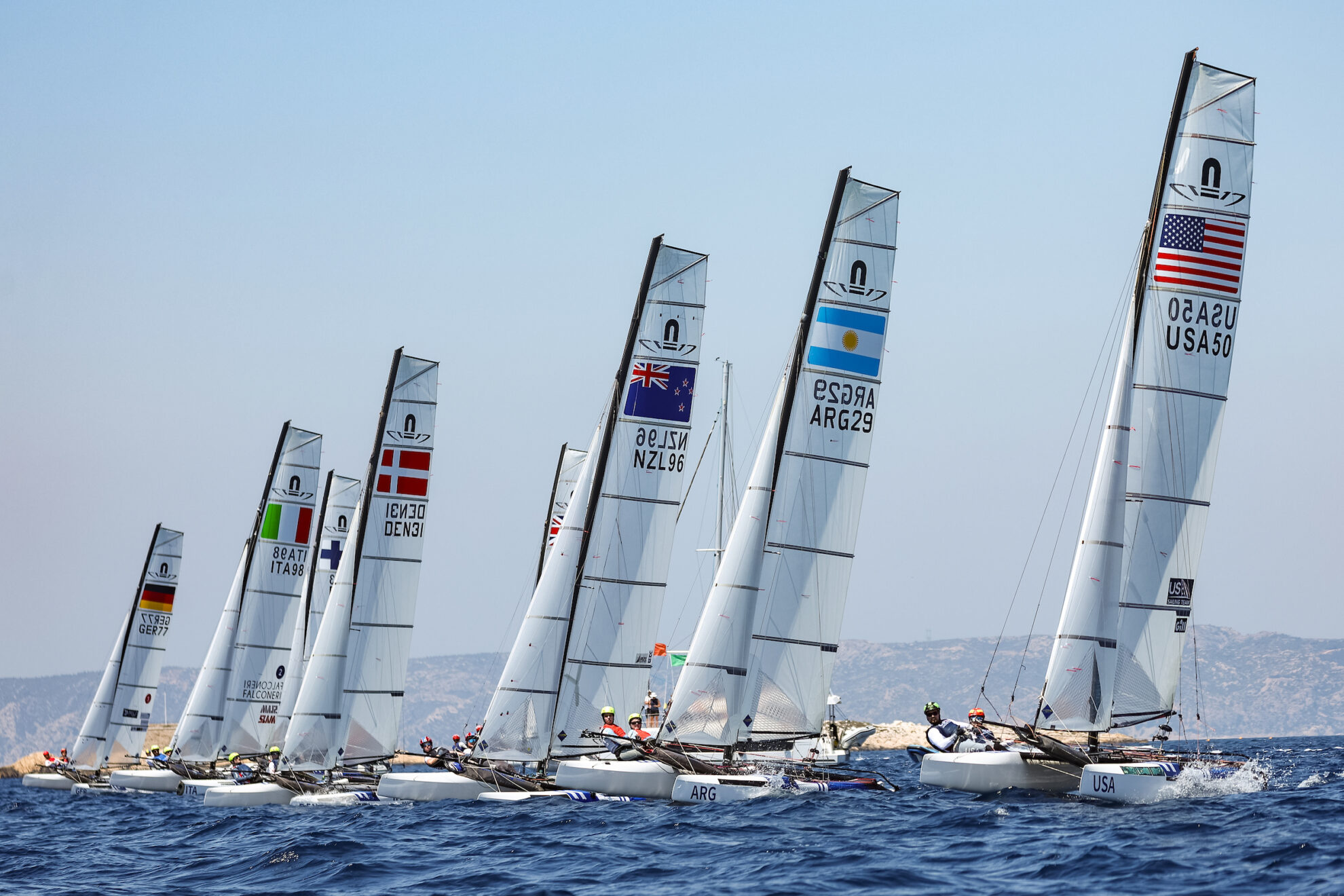The Sailing Olympics have long captivated audiences with their blend of athleticism, strategy, and the sheer beauty of competition on the open water. As waves crash against hulls and sails billow in the wind, this sport not only showcases remarkable talent but also serves as a powerful platform for shaping its future. With each Olympic cycle, sailing evolves—reflecting advancements in technology, changes in rules, and the ever-growing passion of its athletes.
As we gear up for another thrilling edition of the Sailing Olympics in 2021, it’s essential to explore how these games influence both professional sailors and enthusiasts alike. From historical roots to groundbreaking innovations on the water, let’s dive deep into how this prestigious event is steering sailing towards new horizons.
History of Sailing in the Olympics
Sailing has a rich history in the Olympics, first making its debut at the inaugural modern games in 1896. However, it was quickly dropped from the program. It wasn’t until 1900 that sailing returned, this time held on the waters of Paris.
Over the decades, various classes of boats have graced Olympic competitions. Each iteration showcased different skills and techniques required for diverse conditions and vessel types. From classic yachts to smaller dinghies, these changes reflect not just personal prowess but also advancements in boat design.
The sport gained traction as international participation grew. Nations began to view sailing as both a symbol of national pride and an opportunity for athletes to showcase their talent on a global stage. With each passing Olympic cycle, sailing wove itself deeper into the fabric of competitive sports culture worldwide.
Evolution of Sailing Events at the Olympics
Sailing events at the Olympics have come a long way since their inception in 1900. Initially, sailing was more of an afterthought, featuring just one event.
As time progressed, it became clear that sailing had unique challenges and intricacies. The introduction of different classes allowed for greater representation and diversity among competitors.
From dinghies to larger keelboats, each class brought its own set of skills and strategies into play. This evolution enriched the competition landscape significantly.
With advancements in technology, boats have become faster and more agile. This has raised the bar for athletes who now need exceptional skills combined with strong tactical acumen.
Changes in gender inclusion also marked pivotal moments in Olympic sailing history. Events are designed to ensure equal opportunities for male and female sailors alike, showcasing talent across all demographics.
Impact on the Sport of Sailing
The impact of the sailing Olympics extends beyond thrilling races. It ignites interest in the sport, attracting newcomers and enthusiasts alike. With every Olympic cycle, we witness a surge in participation at local clubs and events.
This global platform showcases diverse sailing disciplines, broadening its appeal. From windsurfing to 49er skiffs, viewers become inspired to try their hand at various styles.
Sponsorship opportunities increase as commercial brands recognize the potential reach of the sport through Olympic coverage. This influx of funds can elevate training programs and enhance facilities worldwide.
Moreover, high-performance technology emerges from this competitive environment. Athletes push boundaries with innovations that eventually trickle down to recreational sailors.
Through captivating stories and remarkable feats, the sailing Olympics create a narrative that resonates with audiences. This connection fosters a deeper appreciation for both athletes and their craft within communities around the globe.
Changes in Rules and Regulations
The landscape of sailing at the Olympics is constantly shifting, and recent changes in rules and regulations reflect this dynamic nature. The International Sailing Federation (World Sailing) continuously evaluates how to enhance both competition and safety.
One notable change has been the introduction of mixed-gender events. This move aims to promote inclusivity, allowing athletes from diverse backgrounds to compete together. It’s a significant step towards breaking down barriers in a traditionally male-dominated sport.
Additionally, advancements in technology have led to updates in equipment specifications. With new materials and designs emerging, regulations adapt accordingly to ensure fair play while embracing innovation.
Safety measures have also evolved, with stricter guidelines on life jackets and emergency protocols for competitors during races. These adjustments not only protect athletes but foster greater confidence among teams as they navigate challenging conditions on the water.
Athletes to Watch at the 2021 Sailing Olympics
The 2021 Sailing Olympics features a lineup of incredible talent, making it a must-watch event for sailing enthusiasts.
One athlete to keep an eye on is Tom Slingsby from Australia. His experience and exceptional skills make him a formidable competitor in the Laser class. With previous Olympic gold under his belt, he’s eager to defend his title.
Another standout is Hannah Mills from Great Britain. As one of the top female sailors globally, her accomplishments in the 470 class speak volumes. Her dedication and teamwork with partner Eilidh McIntyre bring excitement to their races.
Don’t forget about Denmark’s Anne-Marie Rindom, who has consistently shown remarkable performance in the Laser Radial category. Her determination and strategic approach could lead her to podium success.
Each athlete brings unique strengths that contribute to an exhilarating competition this summer at the Sailing Olympics.
The Future of Sailing as an Olympic Sport
The future of sailing as an Olympic sport looks promising, with ongoing innovations and increased global interest. As technology advances, we see new designs and materials that enhance performance on the water.
Youth engagement is crucial for sustainability in the sport. Programs targeting younger generations can cultivate a passion for sailing early on. Schools and clubs are beginning to incorporate these training opportunities, making it more accessible.
Additionally, environmental concerns are shaping competitions. Embracing sustainable practices will not only appeal to sponsors but also resonate with a growing audience aware of climate change.
Diversity in events is another exciting trend. With mixed-gender teams gaining popularity, the Olympics could become more inclusive while showcasing talent from different backgrounds.
As sailing evolves within this prestigious framework, it has the potential to inspire future athletes worldwide while promoting unity through competition and sportsmanship.
Conclusion
The Sailing Olympics have long been a cornerstone of the sport, showcasing not only athletic prowess but also the beauty and challenge of sailing. With a rich history that dates back to 1900, the Games have evolved dramatically over time. The introduction of new classes and events reflects changing interests, technology advancements, and environmental considerations.
These changes impact how we view sailing as a competitive sport. Athletes now approach training with scientific rigor, incorporating data analysis and cutting-edge techniques into their preparation routines. This professionalization elevates the competition level, making it more thrilling for fans worldwide.
As we look ahead to future Olympic Games, the focus on inclusivity will likely continue to shape event formats and athlete participation. Watching emerging talents at events like Tokyo 2021 gives us insight into what’s next for this dynamic discipline.
The Sailing Olympics not only inspire budding sailors but also encourage broader conversations about sustainability in sports—an increasingly important topic in our world today.
With each passing Olympic cycle, sailing continues to redefine itself while staying true to its roots as an exhilarating blend of skill, strategy, and teamwork. As interest grows globally in both competitive racing and recreational sailing experiences alike, one thing is clear: the horizon looks bright for this timeless sport within the framework of international competition.

